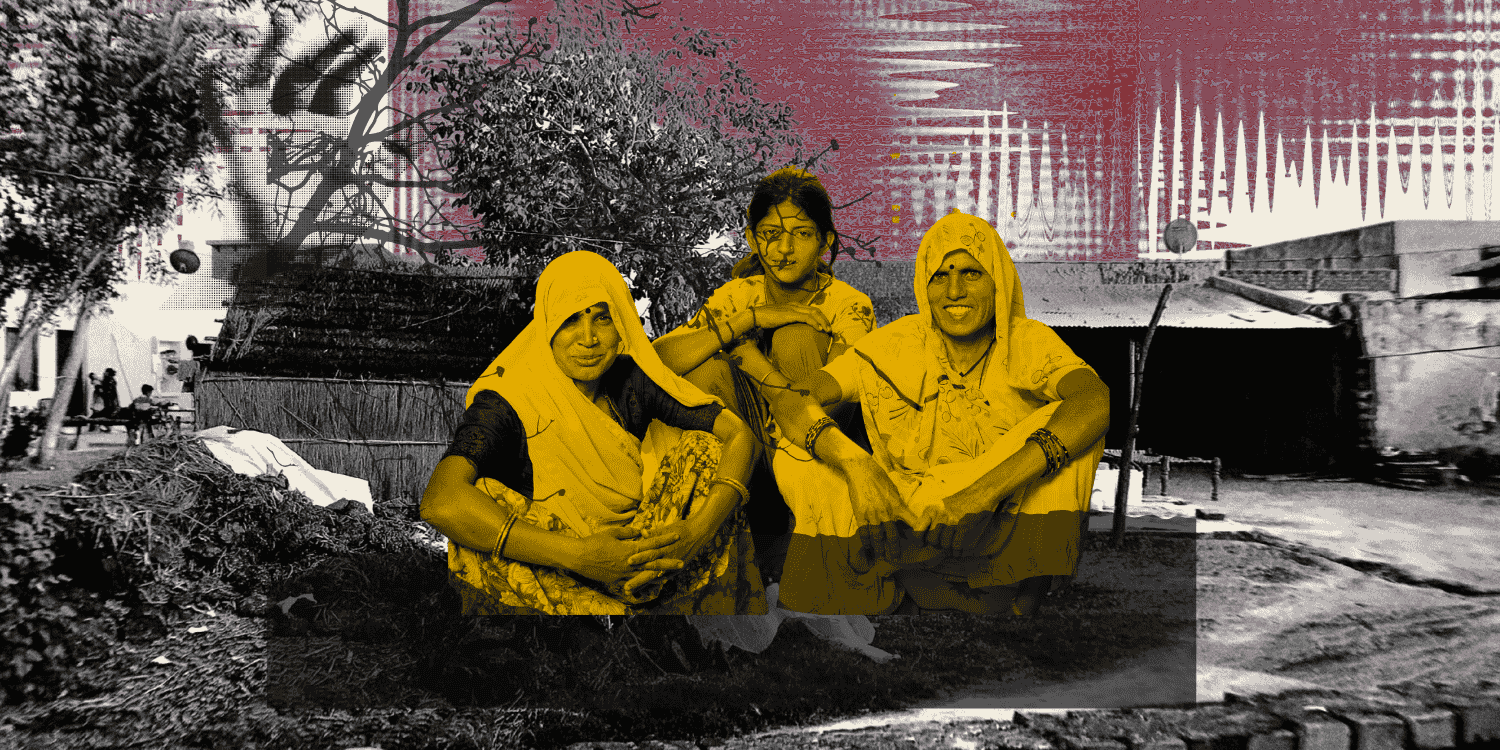Introduction
Preterm birth and low birth weight (PBLBW) are one of the leading causes of infant mortality in children under five, making them a significant public health challenge that accounts for a large portion of the global disease burden (Darmstadt et al., 2023). By definition, preterm birth occurs when an infant is delivered before 37 weeks of gestation and low birth weight (LBW) refers to babies who weigh under 2500 grams at delivery and independently of gestation age (Krasevec et al., 2022; De Costa et al., 2021). The impacts of preterm birth and low birth weight babies continue to be seen after the neonatal period. The infants born as such carry a higher risk of lifetime health issues (Risnes et al., 2021). They include respiratory distress syndrome, necrotizing enterocolitis, cognitive impairment, developmental delay, sensory impairments like vision and hearing loss, and increased risk of chronic diseases like cardiovascular disease and chronic kidney disease (McPherson and Wambach, 2018; Crump et al., 2019).
With over 15 million preterm babies born annually—about 11% of all live births globally—the need to solve this problem directly aligns with Sustainable Development Goal 3 (SDG 3), to ensure healthy lives and promote well-being for all at all ages. In particular, SDG 3.2 aims to eradicate avoidable mortality of newborns and children under the age of five, with interventions that enhance neonatal survival, like Kangaroo Mother Care (KMC), being crucial towards the attainment of this worldwide goal (Darmstadt et al., 2023). Likewise, LBW influences around 20 million newborns annually, adding to the worldwide health burden (Krasevec et al., 2022; Cao et al., 2022).
The disproportionate high burden of preterm birth (<37 weeks gestation) and low birth weight (LBW) babies (<2,500 grams) falls in the low- and middle-income countries (LMICs). They contribute more than 80% of preterm births and almost 91% of LBW babies, which indicates the severity of the issue (Blencowe et al., 2019; Chawanpaiboon et al., 2019). Southern Asia carries close to half the world’s burden, with nearly 10 million LBW newborns and 9 million preterm babies being born every year (Blencowe et al., 2012; Blencowe et al., 2019). India, in particular, has the highest number of preterm births globally, with around 3.5 million preterm births and 8 million LBW infants recorded annually (Blencowe et al., 2012; WHO, 2004; Jana, 2023). The incidence rates of preterm births (13%) and LBW infants (40%) in India remain among the highest in the world, making it the country with the highest neonatal mortality, accounting for 779,000 deaths annually (Chawanpaiboon et al., 2019; Lawn et al., 2014; WHO, 2004).While there has been some substantial improvement in recent years, with the neonatal mortality rate (NNMR) for India declining from 29.5 per 1,000 live births in NFHS-4 (2015-16) to 24.9 in NFHS-5 (2019-21), and the infant mortality rate (IMR) falling from 40.7 to 35.2 per 1,000 live births over the same period (NFHS) (MoHFW, 2022; Press Information Bureau, 2022), there remain issues regarding some insistent patterns.
It must be noted that the National Family Health Survey (NFHS-5) 2019-21 also reflects a studied rural-urban divide in neonatal mortality rates (NNMR), where rural areas registered 27.5 deaths per 1,000 live births, much greater than 18.0 in urban areas. States such as Kerala (3.4), Tamil Nadu (7.6), and Goa (4.4) have the lowest NMR, indicating robust healthcare systems, whereas Bihar (34.5), Uttar Pradesh (32.7), and Madhya Pradesh (30.4) show the highest rates, indicating a critical lacuna in maternal and neonatal care. Improvement in healthcare infrastructure, access to skilled birth attendants, and maternal health services are necessary to close this gap (NFHS-5, 2019-20).
Worldwide, Kangaroo Mother Care or KMC has been a major intervention to address the problems of child health and well-being development issues. It is constant skin-to-skin contact between the mother and the baby, early and significant breastfeeding, and close follow-up of the infant’s health. It is an evidence-based and cost-effective intervention that substantially lowers neonatal mortality and morbidity, especially among preterm and low-birth-weight babies. Though proven to be beneficial in enhancing neonatal survival and long-term development outcomes, KMC is still underutilized in most LMICs. Most secondary-level evidence indicates the superiority of Kangaroo Mother Care (KMC) over the Conventional Method of Care (CMC) in enhancing neonatal outcomes. KMC has been proven to increase survival, enhance bonding, and offer crucial warmth, particularly for low-birth-weight infants. This research highlights the evidence for KMC and cites challenges of its hindering and widespread use.
In order to search for evidence for KMC, we have read research papers, reports, and policy papers precisely targeting India. The study is organized into three major themes: evidence on the effect of KMC on neonatal survival and developmental outcomes, barriers to adoption and implementation on a large scale, and policy recommendations for enhancing KMC integration into neonatal care programs. This paper systematically reviewed peer-reviewed journals, government reports, and policy documents using secondary databases, google searches, and WHO archives. The search focused on studies published between 2000 and 2022, emphasizing clinical trials, meta-analyses, and policy evaluations. Search terms used were “Kangaroo Mother Care,” “Low Birth Weight,” “Neonatal Mortality,” “Preterm Births,” and “Public Health Interventions in LMICs”. The study employed a comparative analysis approach comparing KMC to mainstream neonatal care practices. Analysis of policies was conducted to assess country strategies and analyze gaps in present neonatal care programs. Additionally, a health systems framework was utilized to research socio-cultural, infrastructural, and regulatory bottlenecks that the adoption of KMC could have caused. Multiple-perspective analysis maintains an elaborate and inclusive consideration of the various influences on adoption and scale-up of KMC within LMICs.
In addition to its systematic methodology, this research also has some limitations. Since it is based on secondary data, it does not involve primary field research or clinical trials. Language restrictions also limited the review to English-language publications, possibly excluding foreign-language studies relevant to the review. While the study synthesizes data from various sources, it does not perform a quantitative meta-analysis but instead presents a policy discussion.
- Kangaroo Mother Care: An Overview
Among the notable aspects of Kangaroo Mother Care (KMC) is its low-cost, high-impact intervention offering standardized care for low-birth-weight infants. Approximately 15 million premature infants worldwide require hospitalization in a neonatal intensive care unit (NICU) annually (World Health Organization WHO, 2019). This experience is often overwhelming and unexpected for families, as newborns are taken away from their mothers and transferred to a very medicalized and unfamiliar environment (Al Maghaireh et al., 2016; Phuma-Ngaiyaye & Welcome-Kalembo, 2016; WHO & UNICEF, 2020). This separation poses significant challenges to breastfeeding, leading to critically low exclusive breastfeeding rates in the NICU. Only 22.5% of preterm infants meet the WHO’s standard for exclusive breastfeeding in the first six months of life (Wang et al., 2019). This lack risks maternal-infant bonding (Phuma-Ngaiyaye & Welcome-Kalembo, 2016). It increases the risk of infant morbidity (Smith et al., 2017c) and death (Garcia et al., 2011; Smith et al., 2017b). KMC is established evidence of putting a preterm infant (wearing only a diaper) on the caregiver’s bare chest in an upright position for continuous skin-to-skin contact. Major components of the KMC include skin-to-skin contact, exclusive breastfeeding and plan post-discharge care. These practices contribute to enhanced mother and child bonding, enhanced breastfeeding rates and improved neonatal survival chances (Charpak et al., 2020; Moore et al., 2016; Seidman et al., 2015).
KMC is a cost-effective solution that decreases hospital stay times and minimizes complications such as necrotizing enterocolitis and post-discharge healthcare costs (Campbell-Yeo et al., 2015). Such advantages make KMC a desirable choice in both high-resource and low-resource settings. Despite this, the application of KMC faces significant challenges. Implementing KMC in NICUs requires extensive changes in three critical areas: healthcare facilities, healthcare professionals, and parental participation.
2.1. Kangaroo Mother Care in India
India has been leading the promotion and implementation of kangaroo mother care (KMC) over the last three decades, launched in 1994 and the India KMC network formed then (Udani & Bergh, 2024). The Government of India has shown its seriousness towards improving child health by prioritizing newborn care services to enhance child survival rates (MoFHW, 2024). In 2014, the Ministry of Health and Family Welfare (MOHFW) Child Health Division launched the “Kangaroo Mother Care and Optimal Feeding of Low-Birth-Weight Infants: Operational Guidelines” to support the roll-out of kangaroo Mother Care (KMC) in healthcare facilities. The India Newborn Action Plan (INAP), launched in 2014, prioritized KMC as a priority intervention for small and sick newborns who weigh less than 2,000 grams. INAP’s priority actions emphasized the development of fully operational KMC units or wards within health institutions that offer newborn care. The MOHFW GOI also allocated funds to states to create and adapt KMC spaces within special newborn care units to support this initiative. INAP had stipulated coverage targets of NICU in a phase-wise manner starting from 2017 with 35%, 2020 with 50%, 2025 at 75%, and 2030 with 90% levels of coverage (India MOHFW, 2014a). One of the priority actions under the plan was to establish fully functional Special Newborn Care Units (SNCUs) with dedicated KMC units or wards. The “Operational Guidelines” provided comprehensive guidance, such as protocols for the criteria for eligibility to KMC, standards for the provision of infant care, requirements for constructing KMC facilities, institutional and follow-up strategies, budget plans, and communication approach.
Protocols for implementing KMC at the facility and community levels were incorporated into a series of training packages that aim to improve health staff competencies in newborn care. According to the minutes of the KMC Acceleration Partnership meeting held in 2016, India had 630 SNCUs at that time. This number increased to 712 and, as of UNICEF’s 2024 report, stands at 1,054. Of the 712 SNCUs, 265 reported having KMC units (IIPS and Macro International, 2017). However, only 15% of these units met the recommended standard of eight beds per KMC unit. Unfortunately, no updated data on the number of SNCUs equipped with KMC units is available beyond the 2017 IIPS and Macro International findings.
In April 2017, the Government of India (GOI) formed a technical advisory group to strategize and support the nationwide scale-up of KMC (USAID, 2019). Two working groups were established, led by the KMC Foundation in Gujarat and the Postgraduate Institute of Medical Education and Research in Chandigarh, to develop training modules and reporting tools for KMC. Currently, there is no formal systematic mechanism to collect data on KMC implementation parameters. However, reports submitted by 18 states to the GOI revealed that in 12 states, only 0–20% of SNCU-admitted babies received KMC. In comparison, more than 20% of SNCU-admitted babies in six states benefited from the intervention. In this regard there must be a push for the KMC implementation across the health facilities.
- Factors Influencing Neonatal Healthcare Services in Low- and Middle-Income Countries (LMICs)
Although Kangaroo Mother Care (KMC) has been identified as a successful intervention to enhance neonatal survival in India, its effectiveness needs to be viewed in the larger context of various determinants of neonatal health in low- and middle-income countries (LMICs). These determinants, such as healthcare infrastructure, socio-economic status, and maternal education, are key drivers of the success and scalability of KMC interventions, and thus an inclusive strategy is required.For example, a child-oriented, family-centered multidisciplinary clinic in China was more effective in the surveillance of high-risk preterm neonates, allowing for earlier detection of neurodevelopmental impairment and cerebral palsy (Huang et al., 2022). In Ethiopia, less than 10% of neonates had postnatal check-ups. Strategies for improvement include a rise in antenatal care (ANC) visits, encouragement of institutional deliveries, neonatal danger signs awareness, improvement in access to healthcare facilities, and home-based neonatal care visits by health providers should be kry priorities to tackle morbidity of child (Birhane et al., 2022).
Home visitation is a popular and effective model for providing intensive care throughout pregnancy, childbirth, and postnatal, with significant maternal and child health benefits for instance in India ASHA program (Babyar, 2017; Ashwell & Barclay, 2009). Home visitation programs are based on ecological theory, focusing on the interaction between children, their families, and the health systems under multi-layered environmental conditions (Krasevec et al., 2022). These are cost- and time-effective interventions (Yoshikawa, 1995; Olds & Kitzman, 1998) that increase mothers’ competence, knowledge, and level of awareness in childcare, early signs of illness, and timely seeking of care (Chapman et al., 1990). Accredited Social Health Activists (ASHAs) are foremost community health workers in India, numbering more than one million ASHAs posted in 600,000 villages (Peacock et al., 2013). Under programs such as Janani Shishu Suraksha Karyakaram (JSSK, which was introduced in June 2011) (Nandan, 2010) and Home-Based Newborn Care (HBNC, which was started in August 2011) (WHO, 2011), ASHAs are mandated to visit pregnant women, ensure institutional deliveries, and make six to seven home visits during the postnatal period (MoHFW, 2014). Recently, in the year 2013, the Norwegian India Partnership Initiative (NIPI) launched the Home-Based Newborn Care Plus (HBNC Plus) program, tested in four states of Rajasthan, Madhya Pradesh, Bihar, and Odisha. While typically, these visits encompass counseling on age-specific newborn care, breastfeeding, and identification of early danger signs, the HBNC Plus Program incorporated four extra home visits within the first year of life, with age-specific counseling on feeding, hygiene behaviors, early child development, immunization, and growth monitoring (Pappu, 2011).
Despite ongoing difficulties in quality and effectiveness of home visitation services, it is still one of the most cost-effective and efficient interventions that can be scaled up in other middle- and lower-income countries and has been proven to have a beneficial effect on child and maternal health outcomes (Garg et al. 2022; Rasaily et al., 2020). Indeed, several secondary studies report that a good number of quality home visits by ASHAs can significantly enhance physical and cognitive development in infants and newborns, provide early detection of illness, and lower mortality and morbidity rates (Bang et al., 1999). Nonetheless, assessments of ASHA performance pointed out several avenues through which it can be reinforced. First, one can reflect on the non-standardization issue behind the various performances in various geographies. For example, Karnataka mothers scored poorly ASHAs for counseling on obstetric danger signs and newborn care (Kochukuttan et al., 2013). Likewise, internal assessment of the NIPI program reported inadequate home visitation under HBNC and HBNC Plus with fewer than 10% of ill young infants brought by frontline workers to health facilities (UNDP, 2014). Although programmatic issues are well-documented, the social, cultural, and individual barriers ASHAs encounter are under-researched (Glenton,2013). The HBNC Plus program evaluation identified challenges in converting training and incentives into desired outcomes, including the number and quality of home visits (ibid.). Other researches have emphasized this, like the one by Vaishali Deshmukh in the Raisen district of Madhya Pradesh, which took a grounded theory and nexus planning strategy to identify major constraints as being societal in nature, such as caste and economic discrimination, individual challenges such as domestic work and cultural constraints, and programmatic gaps in technical skills, mentoring systems, communication skills, and compensation (Deshmukh et al., 2022).
Although frontline workers such as ASHAs are essential in neonatal care through home visits, their problems are only a part of the overall intricacies of pediatric care in LMICs. According to the NHSRC guidelines in the Handbook for ASHA on Home-Based Care for Young Child, ASHA workers are vital in home visitations. They are essential in propagating and encouraging Kangaroo Mother Care (KMC) by informing mothers about its advantages, promoting compliance, and offering community-based assistance to neonatal care (NHSRC, 2021). While health systems within these areas change, they also have to contend in dealing with long-term and sophisticated neonatal disorders, including congenital disabilities. For example, care for complicated congenital disabilities such as bladder exstrophy (BE) includes a prolonged care trajectory, highly influencing caregiver distress in India (Spencer et al., 2022). Between 2018 and 2020, a multi-method assessment of caregiver distress was implemented as part of the International Bladder Exstrophy Collaboration in Ahmedabad, Gujarat. Pilot data from 2018 cognitive interviews indicated that the major stressors were village stigma (26.5%) and future fertility and marital concerns (52.9%). Structured interviews in 2019 also showed that future (31%) and past stigma (65.5%) came predominantly from community beliefs. In 2020, results showed emotional well-being worsened with increased subsequent surgery (75%, p = 0.002). Caregivers of children who had received initial surgery in five years reported increased anxiety levels (63.8%), which was triggered by multiple surgeries (p = 0.043). Caregivers, despite facing these problems, experienced the collaboration as a positive source of support (36.5%) (Spencer, 2022).
- Effectiveness of KMC in Improving Survival and Developmental Outcomes
The WHO advises administering Kangaroo Mother Care (KMC) in newborns whose weight is less than or equal to 2.0 kg, beginning after the baby becomes clinically stable within a health care facility. Clinically stable implies that the baby is breathing well, maintains a stable heart rate, and can regulate body temperature without any intensive medical interventions. Continuous KMC should be given to these newborns wherever possible. If continuous KMC is not feasible, intermittent KMC is given as an alternative to usual care. There is no recommendation for KMC in unstable neonates with a weight of less than 2.0 kg (WHO, 2015).
A recent Cochrane review observed impressive results that infants whose birth weight was less than 2.0 kg and underwent KMC were found to have a 40% reduced mortality rate at 40 to 41 weeks postmenstrual age, compared to patients receiving routine hospital care. In almost all studies in this review, initiation of KMC was only done once the infant had clinically stabilized, with median age of initiation varying from 3.2 to 24.5 days (Conde-Agudelo, 2016). Moreover, Two RCTs were also carried out in South Africa and Vietnam compared conventional vs. immediate initiation of KMC and showed beneficial effects with immediate initiation (Worku & Kassie, 2005; Bergman & Linley, 2004; Chi Luong et al., 2016).
4.1 KMC and Neurodevelopmental Outcomes
Another important component of KMC is its effect on the child’s neurodevelopmental outcomes. Studies have established that KMC reduces bradycardia and oxygen desaturation episodes in preterm infants, promoting physiological stability and potentially aiding neurodevelopment (Mitchell, et al., 2013). Research on stable infants has associated KMC with short- and long-term neurodevelopmental advantages, with defensive social and behavioral results two decades after intervention (Adejuyigbe et al., 2023). This can further contribute positively to child behavior. Although direct effects on cognition, language, motor function, auditory function, and vision differ among studies, most results indicate an overall positive trend. Also, new evidence from smaller studies shows that KMC could have neuroprotective properties, as evidenced by enhanced sleep patterns, brain maturation patterns on EEG, and better stress responses, all of which have been associated with long-term emotional and cognitive development.
Adejuyigbe et al. (2023) hypothesized in a study that starting KMC immediately after birth can enhance physiological stability and could be followed by structural or functional brain changes during the neonatal period. This may accelerate brain maturation and neural pathway development and minimize the risk of neurocognitive impairments and hypoxia-related morbidities.
4.2 Impact of KMC on Morbidity, Mortality, and Breastfeeding
In spite of this increasing popularity, some areas need more research and evidence generation, such as the effectiveness and safety of early-onset continuous KMC in unstabilized LBW infants, its long-term neurodevelopmental outcomes, and the costs of care associated with it. Interestingly, KMC is closely associated with infant feeding practices and significantly impacts long-term breastfeeding. A Swedish study emphasized this role, finding that very preterm infants who were breastfed at 1, 2, 5, and 6 months had experienced more KMC time per day than those that were not being breastfed at these ages. The study evaluated the association of KMC length with breastfeeding outcomes in mothers with very preterm and preterm singleton infants. Interestingly, no statistically significant difference in the duration of KMC between preterm infants and non-breastfed and breastfed infants existed. Nonetheless, the authors concluded that KMC positively affects breastfeeding, especially in very preterm infants who are at high risk and need longer KMC duration (Flacking et al., 2011). Essentially, the length of KMC has an essential function in reinforcing the mother-infant bond, and through this, improves breastfeeding techniques and aids in infant development.
- Conclusion
The available evidence highlights the comparative advantage of Kangaroo Mother Care (KMC) over Conventional Method of Care (CMC), particularly in improving neonatal survival, supporting exclusive breastfeeding, and facilitating early discharge from the hospital. Initially proposed for resource-limited settings to address the high neonatal mortality rates associated with preterm and low birth weight (LBW) infants, KMC has since received endorsement from the World Health Organization for neonatal care in both high-income (developed) and low-income (developing) countries. In developed countries, implementing KMC may be limited due to the widespread availability of incubators and other technology-based components of KMC. However, significant progress has been made in many developing countries, where facility-based KMC has been institutionalized. Despite its proven cost-effectiveness, KMC’s global implementation faces country-specific, multifaceted challenges.
Several developing nations have, however, initiated national plans to scale up KMC services (WHO, 2023). To help overcome the pitfalls in these settings with limited resources, there is a need to increase caregiver experience and confidence by providing special spaces within hospitals and specially trained staff to secure proper ambulatory follow-up and sustained health education. KMC can also lower death rates by improving neonatal survival, exclusive breastfeeding, and early hospital discharge (Boundy et al., 2016). To bridge the gap in resource-poor settings, strengthening the competency and legitimacy of frontline health workers, like Accredited Social Health Activists (ASHAs), and making the infrastructure available is critical. ASHA workers play a vital role in advocating and supporting Kangaroo Mother Care (KMC) by educating mothers about its advantages, promoting adherence, and offering community-based support for neonatal care (NHSRC, 2021). Global assistance organizations can support these efforts so that KMC can become a cornerstone of neonatal care in India and other low- and middle-income countries.






